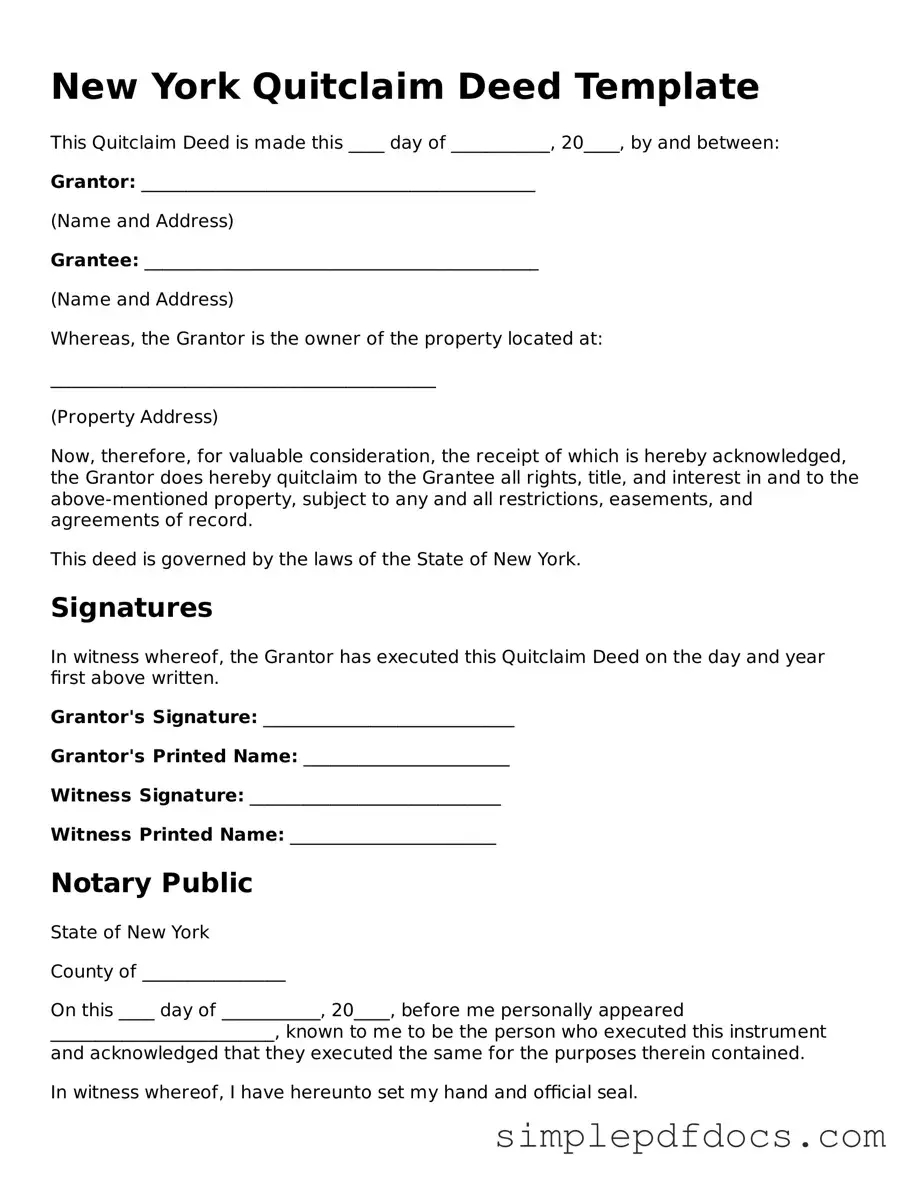The New York Quitclaim Deed form is an essential legal document that facilitates the transfer of property ownership between parties, often used in situations where the seller may not be able to guarantee a clear title. This form is particularly useful in various scenarios, such as transferring property between family members, resolving disputes, or handling property in a divorce. Unlike a warranty deed, which provides a guarantee of title, a quitclaim deed offers no such assurances, making it a simpler, more straightforward option. In New York, the form must include specific information such as the names of the grantor and grantee, a description of the property, and the date of the transfer. Additionally, it requires the signature of the grantor and may need to be notarized to ensure its validity. Understanding the implications of using a quitclaim deed is crucial, as it can significantly impact the rights and responsibilities of both parties involved in the transaction.
